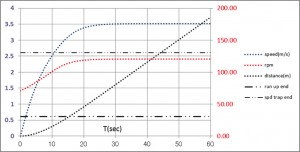Meeting at the DFDS Ferry terminal at North Shields, all 23 MAST students from a variety of streams and stages boarded the ferry for the overnight crossing to IJmuiden (Amsterdam). Before casting off, the ferry provided a perfect vantage point for viewing the comings and goings of the Port of Tyne and as the ferry left the river and headed out into a relatively calm North Sea spirits were high. We swiftly lost sight of land so most people returned to the on-board bars and restaurants for food. After dinner came the Bingo and a pub quiz, where the marine tech students taking part came a respectable second place after the president failed to correctly guess the number of steps up the Eiffel Tower in a sudden death decider round!
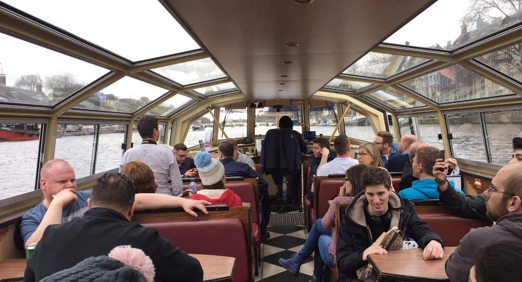 The ferry arrived in IJmuiden at 10am but most had been awake since the early hours learning first-hand what effect an increase in significant wave height and following quartering seas has on the rolling and yawing motions of a vessel at sea. From here we took the bus to the city center and walked to our hostel where we dropped off bags before everyone headed off to do whatever they wanted with the afternoon. Despite the rough seas of the night before still being fresh in many people’s minds, some took a canal cruise whilst others preferred to keep their feet on the ground and walk around Amsterdam visiting places such as the Rijks Museum, Heineken Experience, Maritime Museum and Vondelpark to name just a few.
The ferry arrived in IJmuiden at 10am but most had been awake since the early hours learning first-hand what effect an increase in significant wave height and following quartering seas has on the rolling and yawing motions of a vessel at sea. From here we took the bus to the city center and walked to our hostel where we dropped off bags before everyone headed off to do whatever they wanted with the afternoon. Despite the rough seas of the night before still being fresh in many people’s minds, some took a canal cruise whilst others preferred to keep their feet on the ground and walk around Amsterdam visiting places such as the Rijks Museum, Heineken Experience, Maritime Museum and Vondelpark to name just a few.
The next day we set off early from the hostel, traveling for around 3 hours by private coach to reach Meyer Werft in Papenburg, Germany…the size of their large covered dry dock became apparent when it was visible on the horizon about 10 minutes before we pulled up at the shipyard gates! It is the largest covered dry-dock in the world at 504m long, 125m wide and 75m high.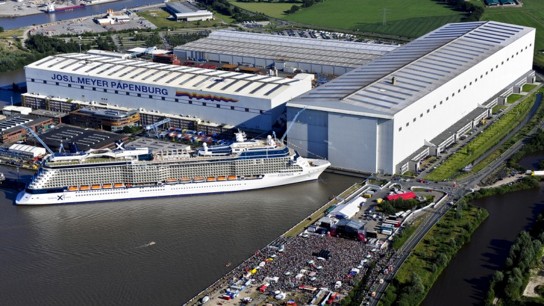
The visit started off with a tour of the Visitor’s Centre where we learn’t a bit about the history of Meyer Werft and how they have progressed from starting out building wooden ships in 1795 to building gas carriers and ro-pax ferries to now being the world’s leading cruise ship manufacturer.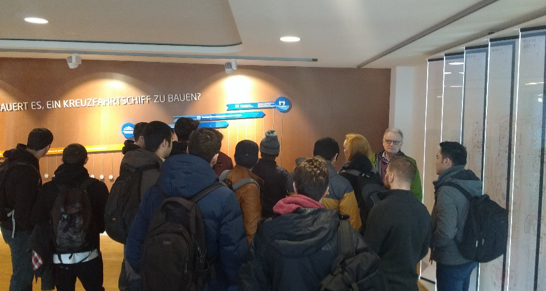
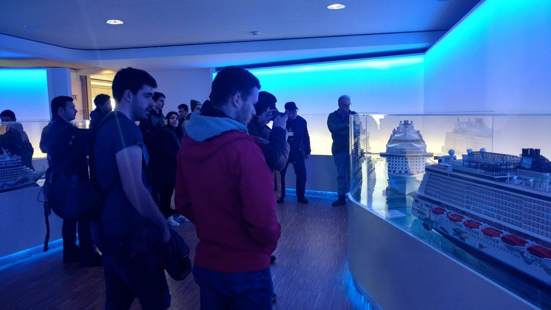
Throughout the visitor’s centre, which contains multiple exhibits and short films that the group moves through, and questions that the group had were ably answered by our guide Albert Albers who although now retired, worked at the yard for over 40years. After seeing a room full of model vessels, we moved through to a simulation of the process of getting ships from Meyer Werft in Papenburg out to the North Sea, some 40km away along a canal and the River Ems.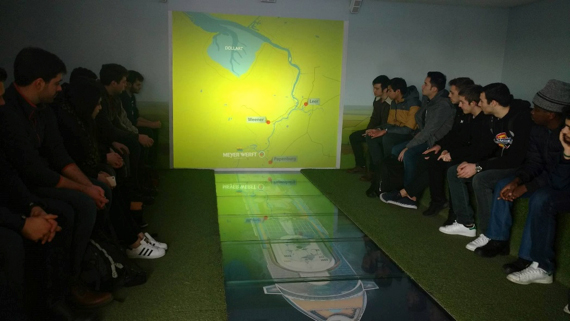
The next stop on the tour was one of the yard’s canteens where we were treated to a typical German lunch of schnitzel and chips.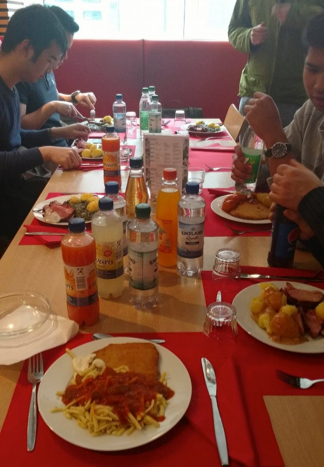
Next up was a walking tour of the yard with Johannes Weber, who took us inside the main assembly hall as well as the laser centre (Lazercentrum) where a flow production line turns sheet steel into sections ready for combining into blocks, with a completed section produced every 4hrs.
 Continuing the tour, we saw the pipe shop and machinery room outfitting shop where completed sections of machinery space are built before being craned in to the vessel during construction.
Continuing the tour, we saw the pipe shop and machinery room outfitting shop where completed sections of machinery space are built before being craned in to the vessel during construction.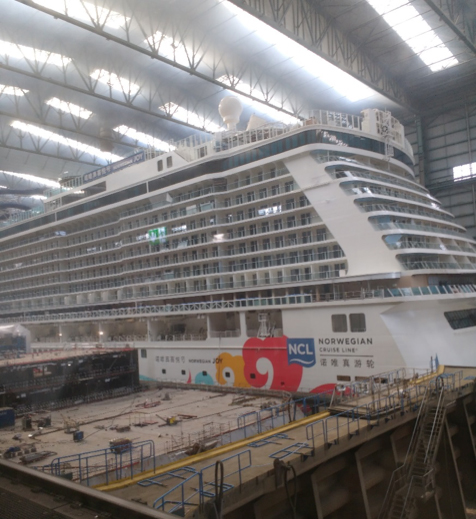
We continued through the smaller building hall to the engineering technology centre where we met the Director of the Technical Design Department, Philip Gennotte and Thomas Zehmer, a Development Engineer from the Technical Design Department, who gave us some talks on HVAC technology in Cruise ships, the Cruise Ship Design Process and Challenges Facing the Cruise Ship Market. This was followed by a Q&A session where students had a chance to ask any questions that they had.
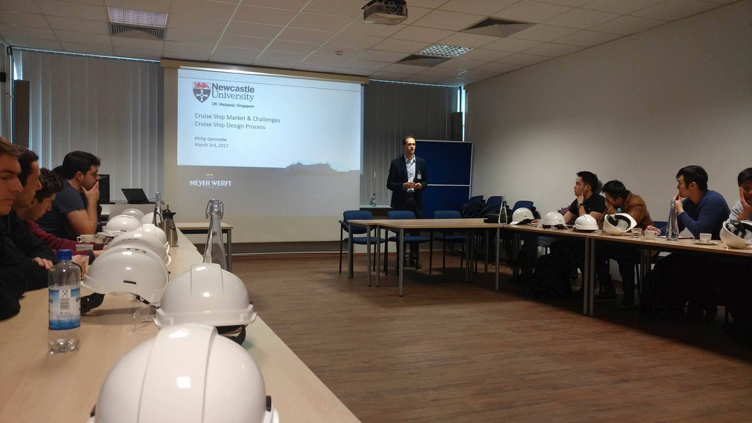 After such an early start and a busy day, many were glad to get back on the bus for a sleep on the way back to Amsterdam where we returned to the hostel.
After such an early start and a busy day, many were glad to get back on the bus for a sleep on the way back to Amsterdam where we returned to the hostel.
The final morning and early afternoon was free for everyone to do what they wanted to, again making the most of being in Amsterdam, before meeting to get the bus back to the ferry mid-afternoon. The weather this time was much more favorable and most people took the opportunity before we left to be outside on deck watching the port activity moving in and around the port and the North Sea Canal that links Amsterdam to the sea at IJmuiden. Jack up rigs, pilot boats, wind farm support vessels, tugs, bulk carriers, dive support and offshore supply vessels were just some of the many vessels that could be seen.
After a thankfully calm night’s sleep we woke up shortly before the ferry docked back in North Shields.
Find out more about WetSoc:
http://www.ncl.ac.uk/marine/currentstudents/studentlife/#wetsoc
For information of our undergraduate degrees:
http://www.ncl.ac.uk/marine/undergraduate/marinetechnology/#about
Phillip Gennotte a Newcastle graduate who is now Director, Technical Design Departments, MEYER WERFT, tell us whats its like to study at Newcastle University.

